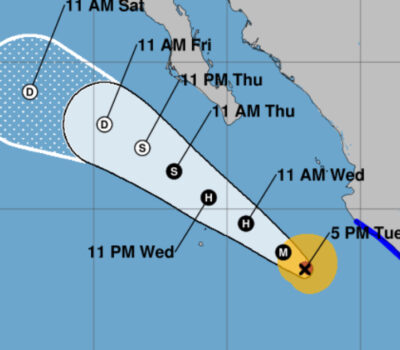Puerto Vallarta, Mexico – Nearly three decades have passed since one of Mexico’s most significant economic upheavals, commonly referred to as the “December Error.” The events of late 1994, which culminated in severe financial instability, continue to resonate in the country’s economic memory. Recent reflections, such as those shared by Enrique Quintana, vice president and general editorial director of El Financiero, have once again brought this pivotal moment into public discourse as the 30-year mark approaches.
On Monday, December 19, 1994, the administration of President Ernesto Zedillo, who had recently succeeded Carlos Salinas de Gortari, found itself on the brink of a major financial crisis. Just weeks after taking office, the Zedillo government presented its first Economic Package—an official outline of the incoming administration’s budgetary and financial strategy. This document, intended to instill confidence and stabilize the nation’s financial environment, failed to convince observers at home and abroad. Market doubts quickly surfaced, and concerns spread that the measures would not prevent a looming currency crisis.
Against this backdrop, top government officials, business leaders, and labor representatives gathered at the Labor Secretariat that December 19. The meeting, chaired by Jaime Serra, then Secretary of the Treasury, aimed to address escalating concerns. At the time, Mexico operated under a hybrid exchange rate regime—a controlled system wherein the peso fluctuated against the U.S. dollar within an established band. On December 19, the exchange rate was recorded at 3.46 pesos to the dollar. As discussions intensified, government officials proposed expanding the peso’s floating band by 15 percent, a move intended to relieve mounting pressure on the currency.
The proposed measure, however, did not find favor among key figures in the business community. Some requested direct intervention from President Zedillo, but the administration decided instead to announce the plan the following day on a widely listened-to morning radio program. According to Quintana, who was then a contributor to the Monitor radio program, the explanation given during an interview with Treasury Secretary Jaime Serra proved confusing, leaving audiences to interpret the move as a straightforward devaluation of the Mexican peso.
The immediate aftermath was swift and unsettling. On December 20, 1994, the peso/dollar parity surged to the upper limit of the band, reaching 3.99 pesos per dollar—significantly higher than the previous day’s rate. The abrupt shift fueled widespread apprehension and accelerated the nation’s currency instability. By December 21, in an urgent attempt to regain control, the Zedillo administration announced that the peso would be allowed to float freely against the U.S. dollar, effectively relinquishing the existing managed exchange system.
This decision triggered a sharp depreciation of the national currency. By December 22, the exchange rate had climbed to 4.99 pesos to the dollar, representing a staggering 44 percent loss in value from its rate on December 19. Investors, businesses, and the general population watched as the chaos continued. Just days later, on December 27, the dollar traded at 5.60 pesos, marking a cumulative 62 percent depreciation in a single week. In the ensuing turmoil, Jaime Serra stepped down as Secretary of the Treasury, and Guillermo Ortiz took over the critical role.
The fallout was profound. Banks faced widespread bankruptcy as nonperforming loans soared, and a recession took hold that inflicted lasting damage on the country’s economic landscape. In the view of many analysts, the December 1994 crisis did not emerge in isolation; rather, it stemmed from frictions between the incoming and outgoing administrations. The lack of a coordinated transition, combined with lingering fiscal imbalances, set the stage for what would become one of Mexico’s most notorious financial debacles.
Today, the memory of the “December Error” persists as a cautionary tale in Mexico’s economic history. Speaking in a recent column, Enrique Quintana emphasized that the events of late 1994 remain a source of national trauma. In his assessment, both the incoming and outgoing governments bear responsibility for creating an environment vulnerable to instability. As Mexico marks nearly 30 years since the crisis, these reflections serve as a reminder that the lessons learned from past missteps continue to shape the country’s approach to fiscal policy, currency management, and the quest for lasting economic stability.
Puerto Vallarta, Mexico - Nearly three decades have passed since one of Mexico’s most significant economic upheavals, commonly referred to as the “December Error.” The events of late 1994, which culminated in severe financial instability, continue to resonate in the country’s economic memory. Recent reflections, such as those shared by Enrique Quintana, vice president and general editorial director of El Financiero, have once again brought this pivotal moment into public discourse as the 30-year mark approaches.












